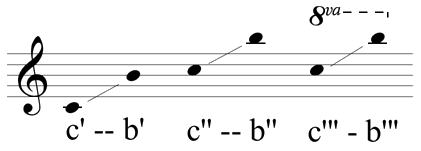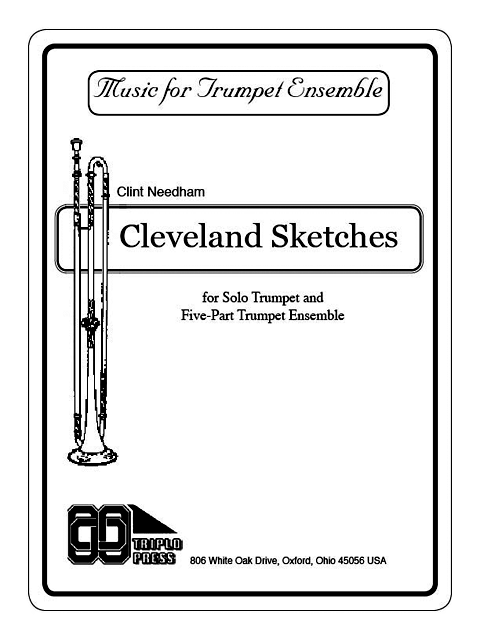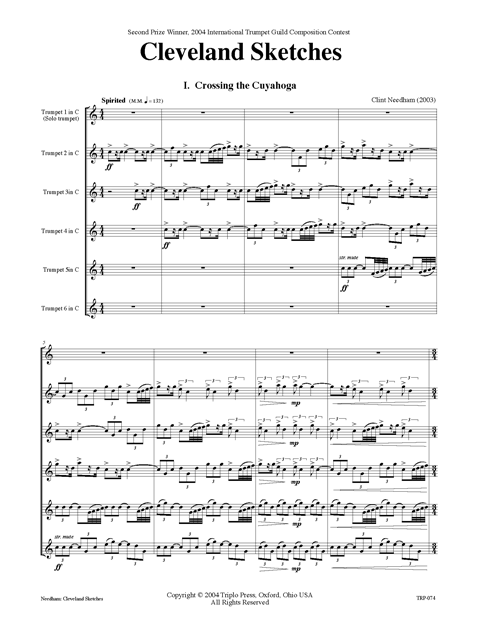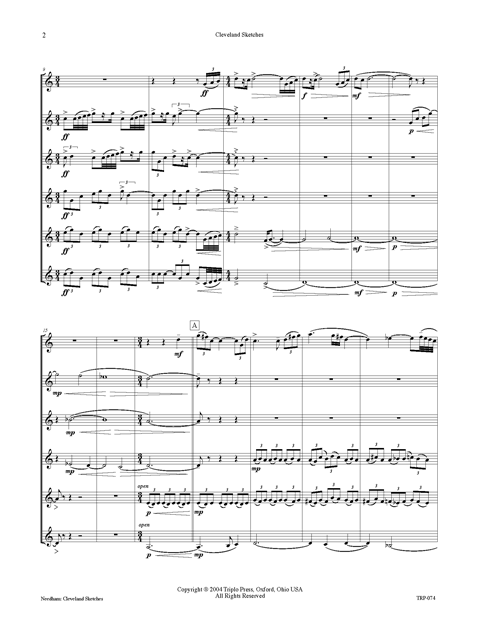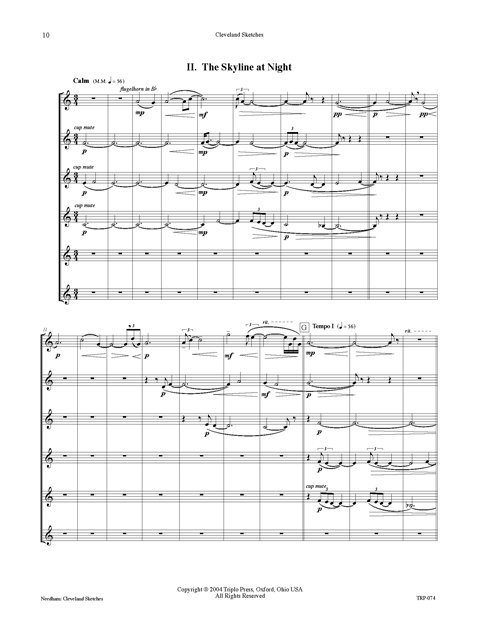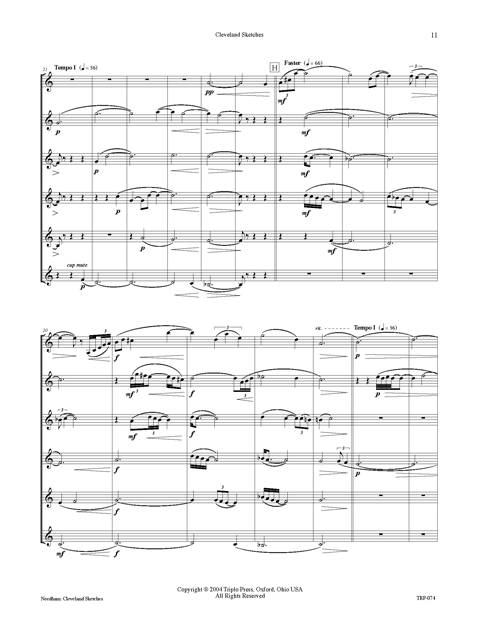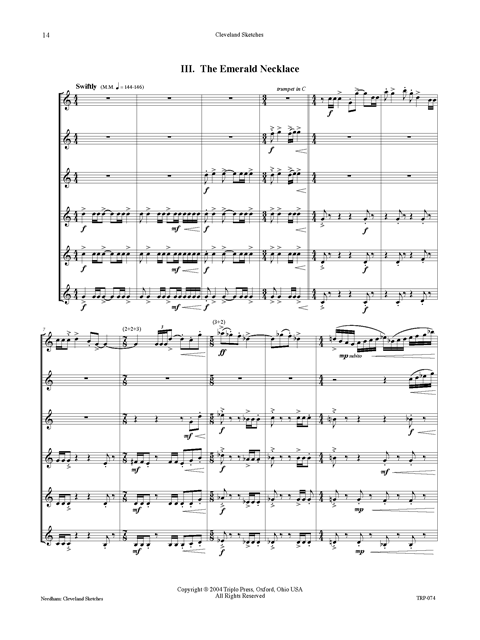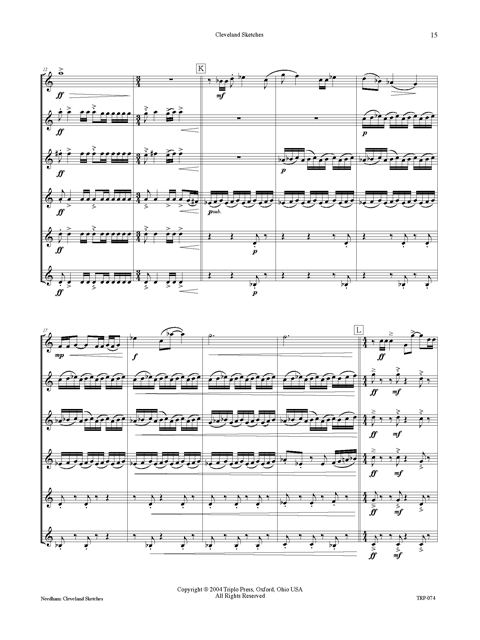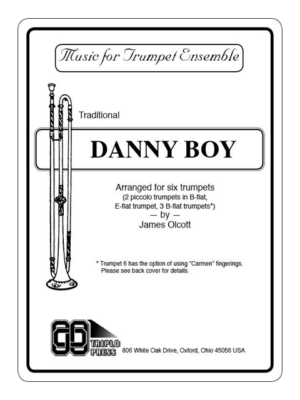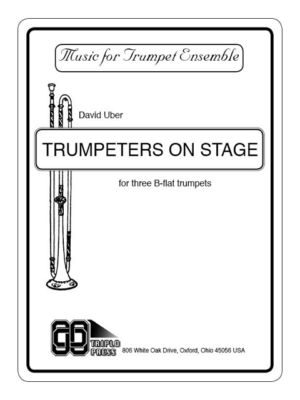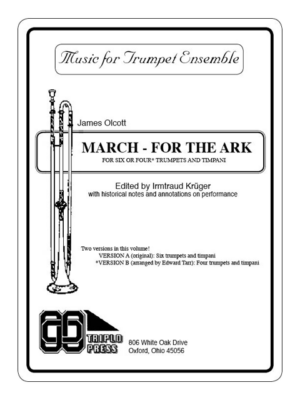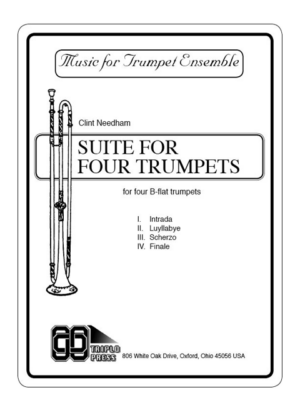0
Cart ▾
There are no items in your cart.
Composer: Needham, Clint
Number of Trumpets: 6
Key: C Major concert
Duration: 9 minutes
Difficulty: 5
Price range: $17.85 through $21.00
Cleveland Sketches
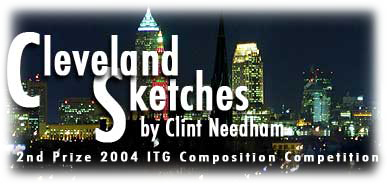 The second prize winner of the 2004 ITG Composition Contest (solo trumpet w/trumpet ensemble accompaniment) and premiered at the 2004 ITG Conference in Denver, this three-movement work is written for trumpet solo and trumpet ensemble accompaniment. All six parts are for C trumpets (which means that they could all be played on B-flats). All parts have lots of action and independence. Very idiomatic for trumpets but with fresh approaches to interplay, color, and accompaniment. Fanfares, warm melodies, playful rhythms. Movements' names: Crossing the Cuyahoga, The Skyline at Night, and The Emerald Necklace.
From the composer: About Cleveland Sketches:
The first movement, Crossing the Cuyahoga, is a heroic fanfare depicting the almost overwhelming scene of towering buildings as one crosses the river into Cleveland, Ohio. The serenity of the evening lights of the city as viewed from far away are the inspiration for The Skyline at Night, depicted by a lyrical song on flugelhorn accompanied by sustained notes in the cup-muted trumpet parts. The last movement, The Emerald Necklace, is a depiction of playful activity in the metroparks which surround the entire Cleveland area. - Clint Needham
The second prize winner of the 2004 ITG Composition Contest (solo trumpet w/trumpet ensemble accompaniment) and premiered at the 2004 ITG Conference in Denver, this three-movement work is written for trumpet solo and trumpet ensemble accompaniment. All six parts are for C trumpets (which means that they could all be played on B-flats). All parts have lots of action and independence. Very idiomatic for trumpets but with fresh approaches to interplay, color, and accompaniment. Fanfares, warm melodies, playful rhythms. Movements' names: Crossing the Cuyahoga, The Skyline at Night, and The Emerald Necklace.
From the composer: About Cleveland Sketches:
The first movement, Crossing the Cuyahoga, is a heroic fanfare depicting the almost overwhelming scene of towering buildings as one crosses the river into Cleveland, Ohio. The serenity of the evening lights of the city as viewed from far away are the inspiration for The Skyline at Night, depicted by a lyrical song on flugelhorn accompanied by sustained notes in the cup-muted trumpet parts. The last movement, The Emerald Necklace, is a depiction of playful activity in the metroparks which surround the entire Cleveland area. - Clint Needham
ITG Journal, October 2008, page 87:"...a great feature piece on a university-level trumpet ensemble recital program."
Audio Sample
PDF version: $17.85
Printed version: $21.00
